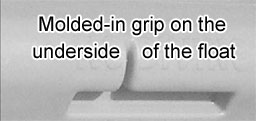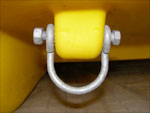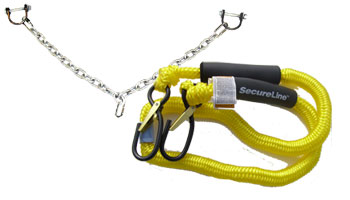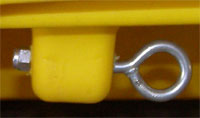| ANCHORING OTTER ISLAND & SUN SPOT WATERFRONT FLOATS | ||||||||||||||||||||||||||||||
|
|
||||||||||||||||||||||||||||||
 |
 |
|||||||||||||||||||||||||||||
| There are a total of four mooring eyes on each raft (a pair on each side). These are used for anchoring the float to the lake bottom or in some cases for towing the float across the lake. The mooring eyes are not designed for the stress that high speed towing can place on them. If you're transporting a float across a lake using the mooring eyes, easy does it. Speed should not exceed five M.P.H. | Our Otter Island and Sun Spot both come standard with molded-in grips for carrying. Two big men or four teenagers can usually transport the floats to or from the lake. | |||||||||||||||||||||||||||||
|
Anchoring: Estimate the depth of
water your float will sit in and secure rope or
chain of that length. For most
conditions you’ll need about #140 of weight to keep
your float in place. Our optional
plastic anchor weighs about #140 when filled with
sand, or use cinder blocks or something weighing about #140. For rough water conditions you may need more than #140. If you're mooring in relative shallow water, where people might walk around bare-footed avoid weights with sharp edges. For stability, anchor using both mooring eyes on one end of the float. For maximum stability or when your float is moored on a river with a current or in an area of high wave action, moor on both ends of the float. |
||||||||||||||||||||||||||||||
|
||||||||||||||||||||||||||||||



